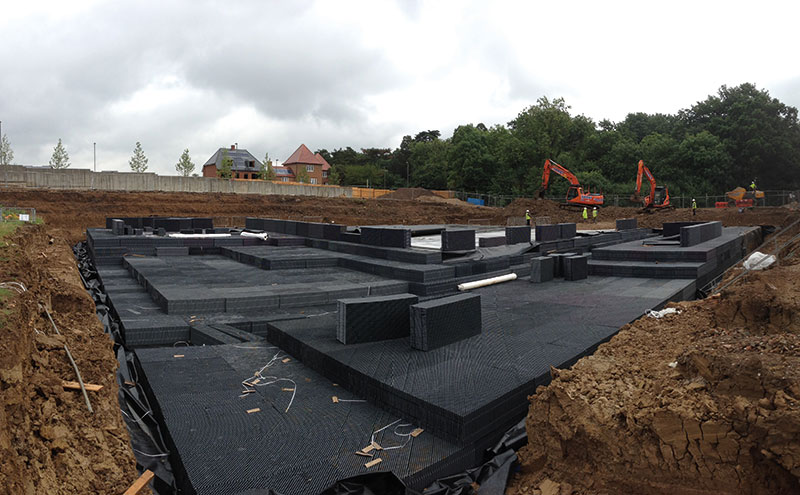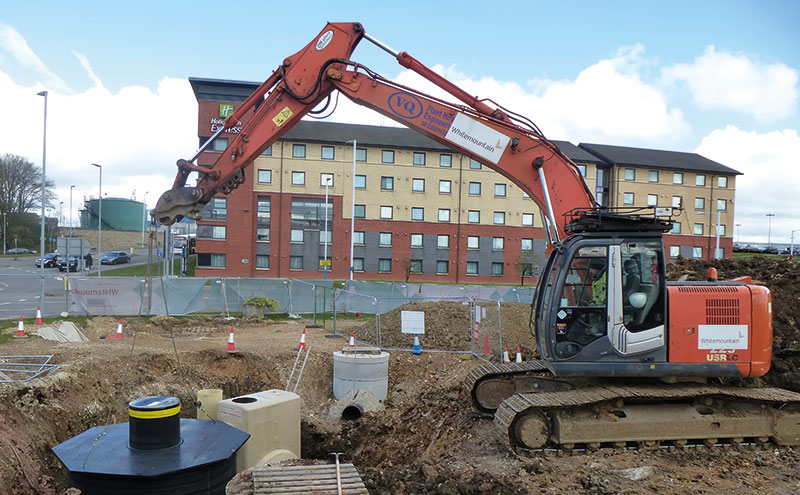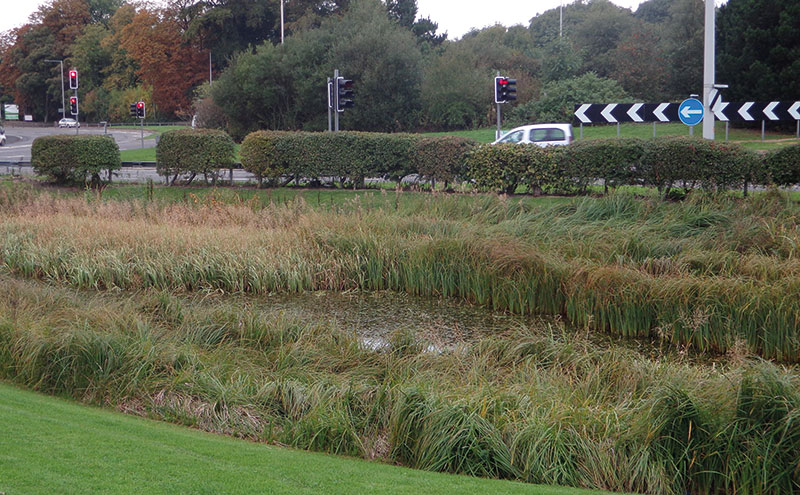
Sustainable Drainage Systems (SuDS) are widely acknowledged to be the most environmentally-acceptable way to manage flood risk and prevent water pollution. Yet, despite their clear multiple benefits, the prevailing professional opinion is that widespread implementation has been too slow.
Mark Manning, business development manager with SDS Limited argues that new ways of thinking mean there has never been a better time for SuDS – and explains why we should expect an acceleration in the use of more sustainable approaches in future
LAST month, long-term supporters of SuDS got some good news: In its historic 25-Year Environment Plan, the UK Government committed to ‘putting in place more sustainable drainage systems’ and outlined key actions to achieve its objectives.
Professionals involved in the delivery of SuDS were delighted, after what many believe has been years of SuDS ‘doldrums’ dogged by a lack of more robust legislation to drive on the use of SuDS in new developments.
Yet, while the 25-Year Environment Plan nails the Government’s colours to a UK-wide mast, the details relate mostly to legislative changes for England. In fact, Scotland has had its own water and planning regulations for SuDS stretching back more than a decade and, as a result, Scotland probably has more SuDS in place than anywhere else in the UK.
So, what are SuDS?
Especially for contractors tasked with delivery of engineering designs alongside many other project demands, differing interpretations can make SuDS confusing. SuDS use a sequence of devices and techniques to mimic natural drainage processes as closely as possible. Wherever there is an opportunity, SuDS should also benefit wildlife and biodiversity, while providing more pleasant surroundings and amenity for local communities.
SuDS intercept and hold back excess surface water runoff, then store it temporarily so that it has time to infiltrate into the ground, evaporate or be taken up by vegetation. Where infiltration is not possible, the SuDS may need to discharge water safely into a nearby sewer or watercourse. The collected rainwater may also be stored so that it can be reused.

SuDS can also remove pollutants by treating, filtering or separating out silt and sediment, debris and hydrocarbons. Scottish regulations have always put great emphasis on encouraging the use of SuDS to protect the quality of water in rivers and streams.
Why do we need them?
A well-designed SuDS scheme avoids flooding by capturing rainwater as close as possible to the point where it first falls, rather than sending it away quickly via traditional piped systems. It is simply unsustainable to use increasingly over-stretched combined sewer networks to deal with flooding and process the water at wastewater treatment plants. Climate change, population growth and new infrastructure development all mean a likelihood of greater risks of surface water flooding during more intense periods of rainfall in future.

Now is a good time for SuDS. It’s time to stop worrying about what has held SuDS back historically. We need to explore and exploit new ways of thinking so SuDS become commonplace on every new development and every street corner.
1) A growing body of best practice
Many involved in SuDS delivery north of the border, from Scottish Water and SEPA, to local authorities, designers, developers and contractors have played a vital part in building a healthy catalogue of best practice case studies. Embedding any new technique into everyday application is an evolution with its ups and downs, so Scotland probably also has most to contribute to lessons learned from design, construction and ongoing maintenance of SuDS. Institutions like the University of Abertay have also been instrumental in working with industry to collect experiences and teach best practice.
2) Emphasis on quality in construction
As the industry gains more experience of SuDS, so it can apply that knowledge to design and build high quality schemes. Especially in the early days, there were cases where a lack of understanding of the special requirements – especially for vegetative features – led to authorities being reluctant to adopt poorly-constructed schemes. As a result, there was potential for these schemes to be ‘orphaned’, neglected or rendered ineffective, largely through a lack of regular maintenance and inspection.
The Construction Industry Research and Information Association (CIRIA) recently published Guidance on the Construction of SuDS (C768) following widescale industry consultation. It’s a really useful summary of ‘do’s and don’ts’ for quality SuDS construction.
3) A full toolbox of SuDS techniques
For engineers and developers, SuDS are not a means to pursue environmental ideals; they must be practical, achievable and capable of being built to time and to budget. So, it’s highly encouraging to note the growing acceptance that SuDS encompass a full toolbox of both manufactured and vegetative features.
An integrated SuDS management train delivers precise engineering performance while facilitating green infrastructure for the benefit of a local community.
Manufactured devices, such as the SDS Aqua-Swirl hydrodynamic vortex separator, can be used to protect vegetative features, for example installed in a sediment forebay to prevent a SuDS pond from silting up. Geocellular storage tanks, for example, SDS GEOlight, can be installed below a shallow detention basin to avoid the need for a deep or steep-sided pond. The basin can then be used for amenity such as a playground or football pitch for most of the time, and then hold back excess flood storage volumes during infrequent, heavier storms.
4) More emphasis on maintenance
The successful adoption of SuDS schemes depends on the owner having confidence in predictable, repeatable drainage performance that can be maintained cost-effectively. The UK Government says it is committed to amending Planning Practice Guidance in England to clarify construction and ongoing maintenance arrangements.
Scottish regulations place an expectation on the water company, Scottish Water, to adopt and maintain SuDS. Correct care and maintenance of planting, vegetation and soils can be challenging to ensure SuDS continue to perform as designed.
For proprietary systems, manufacturers provide information on correct maintenance and inspection. Geocellular storage is usually accessible for maintenance purposes, and the silt and sediment collected by vortex separators is easily removed, perhaps as infrequently as once a year by vacuum tanker.
5) Greater use of technology
Where SuDS have been viewed as ‘low-tech’ approaches, one exciting prospect for them to flourish in future is in the greater availability of ‘smart’ technologies.
Developments in smart sensing and wireless communications will make it more affordable to install instrumentation for measurement and monitoring of SuDS schemes, which could help address the lack of data available to show how SuDS are performing.
Technology could also be used to control surface water flows and volumes, or integrate with rainwater harvesting systems.
Manufacturers may soon find ways of integrating remote level sensing into separation devices, for example, so that operators can know when a sump needs emptying, making maintenance more predictable. At the same time, instrumentation could provide information on how quickly a SuDS pond is silting up, and when a maintenance intervention may be necessary.
Reasons to be cheerful…
At SDS we have been proud to work with Scottish engineers and contractors on a range of surface water drainage projects from commercial developments, to schools and housing schemes.
The Scots are, perhaps, renowned for their pragmatism, and their vast experience and growing knowledge will, I am sure, help to ensure Scotland continues to lead the way in successful SuDS delivery.











